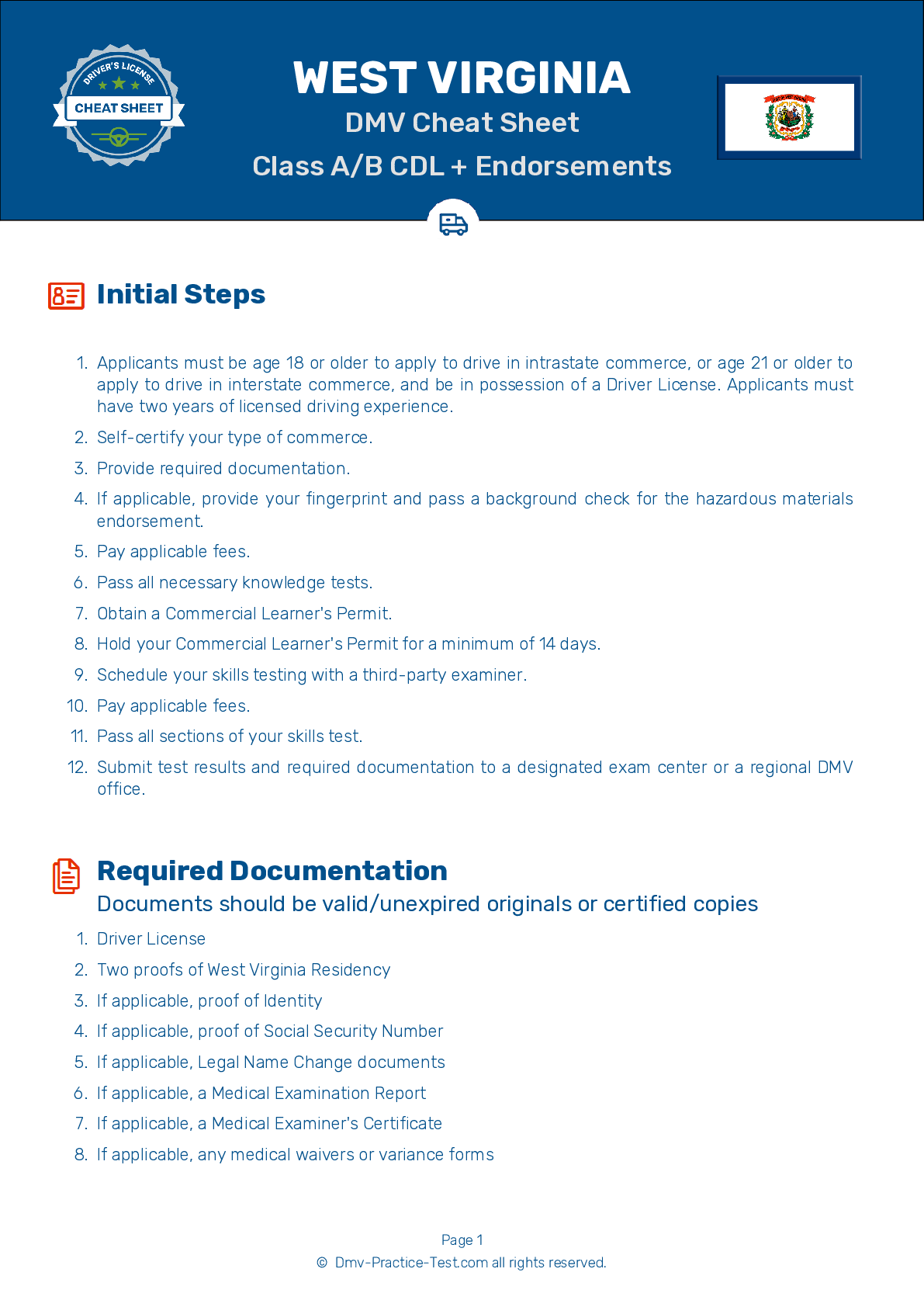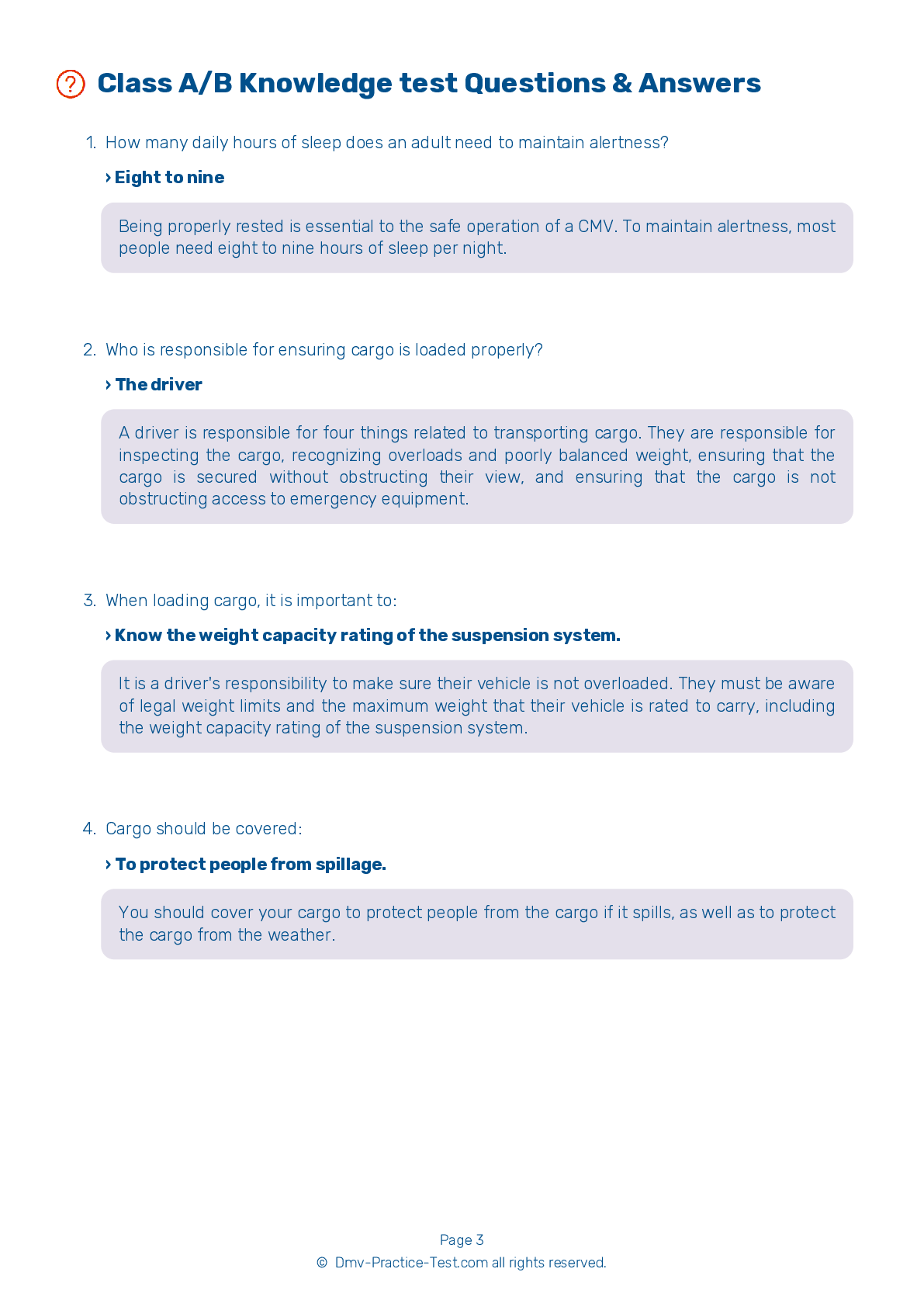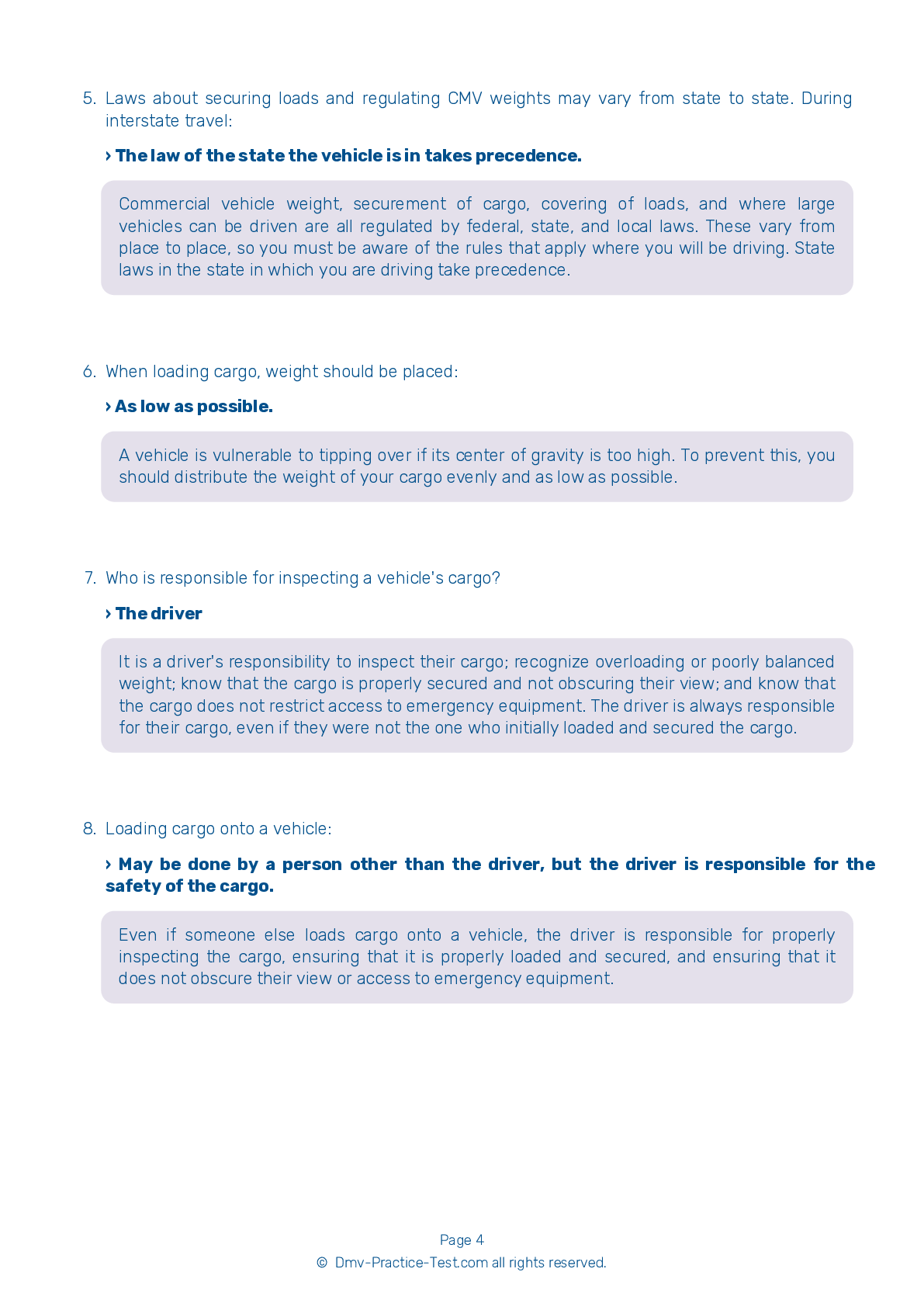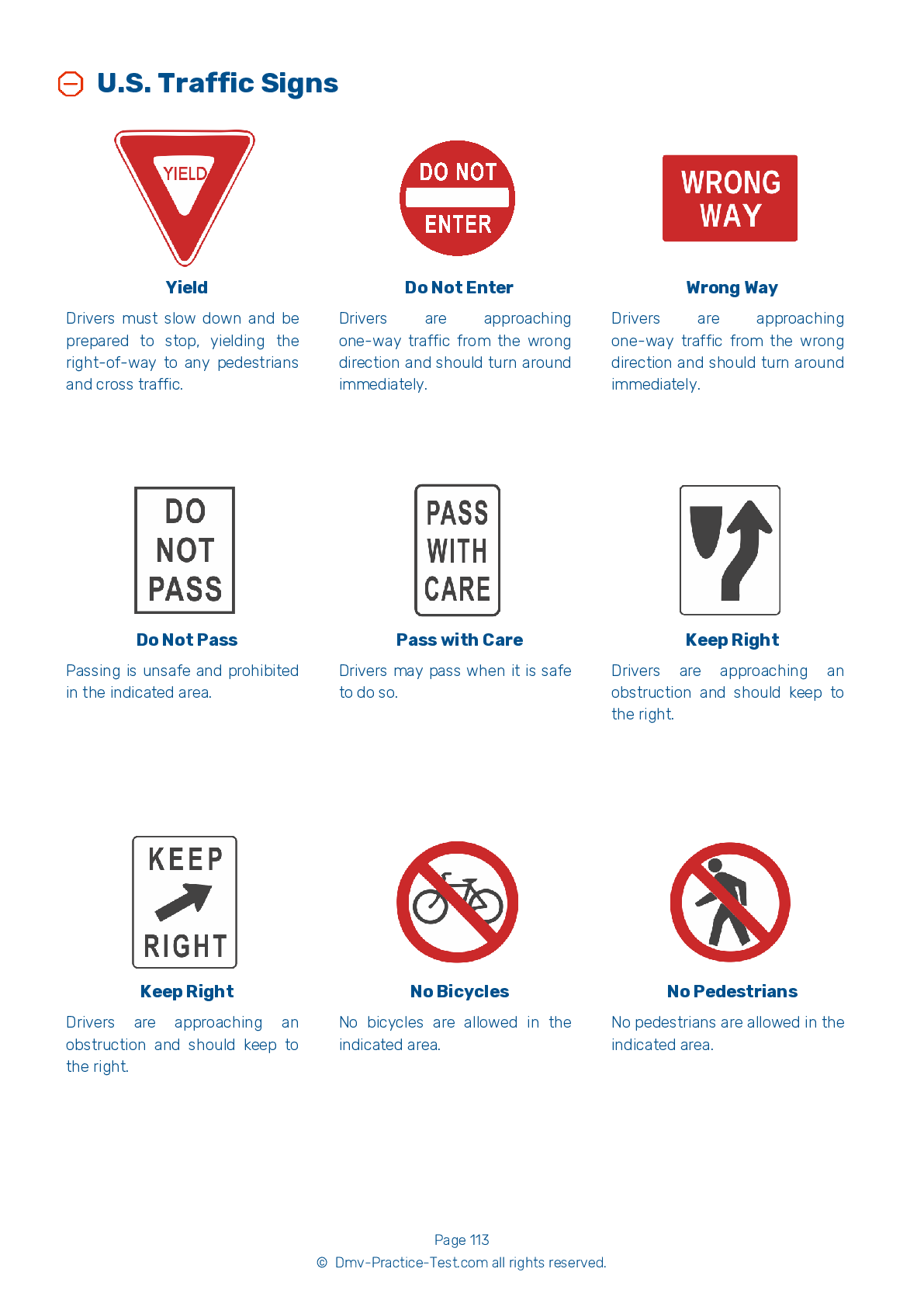Air Brakes #1
Air Brakes Endorsement Test | West Virginia 2025 #1 Page 3 of 4
Train for FREE online with our West Virginia CDL air brake test. The official exam test consists of several obligatory parts, with all of them checking your knowledge of different blocks of road rules. If you need to obtain a WV Class A/Class B driver license in 2025, practice as much as possible. Free sample tests published on our website will help you check and improve your knowledge and boost your grades. Please bear in mind that the requirements for CDL may vary from state to state.
25
20
20
13 . A tank endorsement is:
Optional when transporting hazardous materials.
In general, a tank endorsement is required to a drive tank vehicle used to transport liquids or gases. This applies to both hazardous and non-hazardous materials.
14 . How many air storage tanks are used in an air brake system?
The number varies.
Air storage tanks are used to hold compressed air. The number and size of air tanks in an air brake system varies among vehicles.
15 . A dual air brake system:
Has two separate air brake systems, but uses a single set of controls.
A dual air brake system has two separate air brake systems that use a single set of brake controls. One system typically operates the regular brakes on the rear axle or axles. The other system operates the regular brakes on the front axle.
16 . How is water and compressor oil removed from the bottom of an air storage tank?
A sponge is used to soak up the water and oil.
Water and compressor oil are removed from air storage tanks through a drain valve. The water and oil can damage the brakes if left to accumulate in the system. Manually operated tanks must be drained every day to remove this build-up.
17 . Service brakes should:
Before driving, you should always verify that your service brakes are in good working order. Testing the brakes before a trip allows you to locate any problems before you need to brake while on the road.
18 . In a vehicle with dual parking control valves, once air pressure is lost and the spring brakes come on:
The air tanks will automatically refill to a safe air pressure level.
In a vehicle with dual parking control valves, there is a separate air tank that can be used to temporarily release the spring brakes if they have been activated due to low air pressure. Pushing in the proper control will release the spring brakes for a short period of time, allowing the driver to move the vehicle in an emergency.
2025 West Virginia | Frequently Asked Questions
To acquire a CDL Hazmat endorsement in West Virginia, you must already possess a valid CDL. Then, pass the Hazmat knowledge test at a DMV office. Before the test, you need to complete a hazardous materials endorsement application and pass a TSA background check. Finally, pay the required fees to receive your endorsement.
To obtain a CDL Hazmat license, you must already possess a valid Commercial Driver's License (CDL). You should be at least 21 years old and have U.S citizenship or legal Permanent Resident status. Prior to the Hazmat knowledge test, you must pass a Transportation Security Administration (TSA) background check. Good driving record and physical fitness are also required.
When applying for a CDL Hazmat endorsement, you'll need to provide proof of U.S. citizenship or permanent legal residency (like a birth certificate or green card), your valid Commercial Driver's License (CDL), and a completed Hazardous Materials Endorsement application. You'll also need to provide fingerprints for the background check conducted by the Transportation Security Administration.
Yes, there is a dedicated written test for the CDL Hazmat endorsement. This test is designed to evaluate your knowledge of the rules and regulations related to transporting hazardous materials. It covers topics like loading and unloading hazardous materials, bulk packaging marking, driving and parking rules, and emergency response procedures.
The written test for the CDL Hazmat endorsement covers various subjects related to hazardous materials. These include identifying different types of hazardous materials, understanding shipping papers, placarding rules, loading and unloading procedures, emergency response procedures, and safety protocols. The test also covers federal and state regulations for transporting hazardous materials.
Yes, there are extra charges associated with acquiring a CDL Hazmat endorsement in West Virginia. These include fees for the written test, fingerprinting, background check, and endorsement itself. The exact amount can vary, so it's recommended to check with the local DMV for the most current fees.
Yes, background checks and security clearances are mandatory for the CDL Hazmat endorsement. This includes a fingerprint-based TSA (Transportation Security Administration) security threat assessment. The purpose is to ensure the driver doesn't pose a security risk while transporting hazardous materials.
Yes, specialized training and certification are required for the CDL Hazmat endorsement. In addition to passing the general CDL test, applicants must pass a specific Hazmat knowledge test. They must also undergo a TSA background check. The endorsement is then added to their commercial driver’s license upon successful completion of these requirements.
No, you cannot legally transport hazardous materials without a valid CDL Hazmat endorsement in West Virginia, or in any other state. This endorsement ensures that the driver has the necessary training and knowledge to handle hazardous materials safely and appropriately. Violating this requirement can lead to serious penalties.
Yes, you can add the CDL Hazmat endorsement to your current CDL license. However, it requires passing the Hazmat knowledge test and a TSA background check. Once these steps are successfully completed, the Hazmat endorsement is added to your existing CDL without needing a new license.



